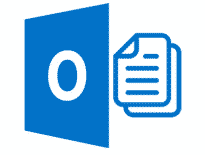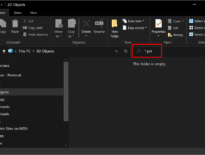Email migration is a process of transferring emails and other data from one email platform to another. One of the most common email migration scenarios is moving from a different email client to Microsoft Outlook. Outlook is a popular email client used by millions of individuals and organizations worldwide. However, the process of migrating emails to Outlook can be complex and daunting for many users. In this article, we will provide expert answers to common questions related to email migration to Outlook, helping users understand the process better and ensure a smooth transition.
Table of Contents:
- Why migrate to Outlook?
- What are the different methods of email migration to Outlook?
- How to prepare for email migration to Outlook?
- What are the common challenges faced during email migration to Outlook?
- How to migrate emails from different email clients to Outlook?
- How to migrate emails from web-based email services to Outlook?
- How to migrate emails from another Outlook version to the latest Outlook version?
- What are the best practices for email migration to Outlook?
- How to ensure data integrity during email migration to Outlook?
- How to handle email attachments during the migration process?
- How to migrate contacts and calendar entries to Outlook?
- What are the post-migration steps to ensure a smooth transition?
- How to troubleshoot common issues during email migration to Outlook?
- What are the alternatives to Outlook for email management?
1. Why migrate to Outlook?
Outlook offers a wide range of features and functionalities that make it a preferred choice for email management. Some of the key reasons to migrate to Outlook include:

- Robust email organization: Outlook provides advanced email management features such as folders, rules, and filters, allowing users to efficiently organize their emails.
- Integration with other Microsoft applications: Outlook seamlessly integrates with other Microsoft applications like Word, Excel, and PowerPoint, making it easier to collaborate and share files.
- Enhanced security: Outlook offers robust security features, including built-in spam filters, encryption options, and protection against phishing attacks.
- Advanced calendar and scheduling: Outlook’s calendar feature allows users to schedule appointments, set reminders, and share calendars with colleagues, improving productivity and time management.
- Mobile access: Outlook is available on various platforms, including desktop, web, and mobile devices, ensuring users can access their emails and data from anywhere.
2. What are the different methods of email migration to Outlook?
There are several methods to migrate emails to Outlook, depending on the source email client or service. The common methods include:
Manual migration
This involves manually exporting emails from the source email client and importing them into Outlook. This method is suitable for small-scale migrations and requires technical knowledge. To import emails exported from another email client to Microsoft Outlook, follow these steps:
-
- Launch Microsoft Outlook on your computer.
- Click on the “File” tab in the top-left corner of the Outlook window.
- In the File menu, select “Open & Export” and then choose “Import/Export.”
- The Import and Export Wizard will open. Select “Import from another program or file” and click “Next.”
- Choose the file type that matches the format in which your emails were exported.
For example, if you exported emails as a .pst file, select “Outlook Data File (.pst)” and click “Next.” - Click the “Browse” button to locate the exported email file on your computer. Select the file and click “Open.”
- Choose how you want Outlook to handle duplicate items during the import process.
You can either allow duplicates, replace duplicates, or do not import duplicates. Click “Next” when you have made your selection. - Select the folder where you want to import the emails. You can choose an existing folder or create a new one. Click “Next.”
- If you are importing a .pst file, you can choose to include subfolders or import only specific folders. Make your selection and click “Finish.”
- Outlook will begin importing the emails from the exported file. The time it takes will depend on the size of the file and the number of emails being imported.
- Once the import is complete, you will see a confirmation message. Click “Finish” to close the Import and Export Wizard.
Your emails should now be imported into Microsoft Outlook and accessible in the selected folder.
PST file import
Outlook allows importing emails from a PST (Personal Storage Table) file. Users can export emails from the source email client to a PST file and then import it into Outlook. Importing emails from a PST (Personal Storage Table) file to your Outlook profile can be a convenient way to consolidate and access all your emails in one place. This set of instructions will guide you through the process step-by-step, ensuring a successful import.
Step 1: Locate the PST File
1. Launch Outlook on your computer.
2. Click on the “File” tab in the top-left corner of the Outlook window.
3. From the drop-down menu, select “Open & Export” and then click on “Open Outlook Data File.”
Step 2: Select the PST File
1. In the “Open Outlook Data File” window, navigate to the location where your PST file is stored.
2. Select the PST file you want to import and click on the “Open” button.
Step 3: Choose Import Options
1. A new window will appear, asking you to choose the import options. Select “Import items into the current folder” and click on the “Next” button.
2. If you want to import the PST file into a specific folder, choose “Import items into the same folder in” and select the desired folder from the drop-down menu. Then, click on the “Finish” button.
Step 4: Monitor the Import Progress
1. Outlook will begin importing the emails from the PST file into your Outlook profile.
2. You can monitor the progress by looking at the progress bar displayed on the screen. Larger PST files may take some time to import, so be patient.
Step 5: Access Imported Emails
1. Once the import process is complete, you can access the imported emails in your Outlook profile.
2. Navigate to the folder where you chose to import the emails and expand it to view the imported emails.
Note: It’s important to remember that importing a PST file merges its contents with your existing Outlook data. Duplicate emails may occur if you already have similar emails in your Outlook profile.
Third-party migration tools

The software is designed to be easy to use and does not require any technical expertise, unlike manual conversion which can be complex and confusing. Outlook Transfer software can convert multiple messages at once, which is not possible with manual conversion.
Outlook Transfer Software supports conversion from various email clients to Outlook, which may not be possible manually. The software preserves all email attributes such as To, Cc, Bcc, sent/received date, attachments, etc. during the conversion process.
Outlook transfer software providers offer round-the-clock customer support to help with any issues you may have, unlike manual conversion where you’re on your own.
3. How to prepare for email migration to Outlook?
Before starting the migration process, it is essential to prepare adequately. Here are some key steps to follow:
Backup data
Create a backup of all emails, contacts, and calendar entries from the source email client to ensure data safety. To backup Outlook data manually, you can follow these steps:
-
- Open Outlook and click on the “File” tab at the top left corner of the screen.
- In the File menu, click on “Open & Export” and then select “Import/Export”.
- In the Import and Export Wizard, choose “Export to a file” and click “Next”.
- Select “Outlook Data File (.pst)” and click “Next”.
- Choose the folder(s) you want to backup. You can select the entire mailbox or specific folders.
- Click on “Browse” to choose the location where you want to save the backup file.
- Give a name to the backup file and click “OK”.
- Click on “Finish” to start the backup process. Depending on the size of your mailbox, it may take some time to complete.
- Optionally, you can set a password for the backup file by entering it in the “Password” and “Verify Password” fields. This will add an extra layer of security to your backup.
- Once the backup is complete, you will have a .pst file saved in the location you specified. This file contains all your Outlook data, including emails, contacts, calendar entries, and more.
Remember to regularly backup your Outlook data to ensure you have a recent copy in case of any data loss or system failure.
Clean up mailbox
Delete unnecessary emails, folders, and attachments to reduce the size of the mailbox, making the migration process faster and smoother.
Delete Unnecessary Emails
Alternatively, you can use the “Clean Up” feature in Outlook to automatically delete redundant messages.
Delete Unnecessary Folders
-
-
- Right-click on the folder you want to delete in the Outlook folder pane.
- Select “Delete Folder” from the context menu.
- Confirm the deletion when prompted.
-
Remove Attachments
-
-
- Open the email with the attachment you want to remove.
- Right-click on the attachment and choose “Remove” or “Save As” to save it to your computer and then delete it from the email.
- Alternatively, you can use the “Save All Attachments” option to save multiple attachments at once and then delete them from the email.
-
Empty the Deleted Items Folder
-
-
- In Outlook, go to the “Deleted Items” folder.
- Right-click on the folder and select “Empty Folder” or “Empty Deleted Items Folder.”
- Confirm the deletion when prompted.
-
Compact the Outlook Data File
-
-
- Go to the “File” tab in Outlook and select “Options.”
- In the Options window, click on “Advanced” and scroll down to the “Outlook Data File Settings” section.
- Click on “Compact Now” to reduce the size of the Outlook data file.
-
By following these steps, you should be able to delete unnecessary emails, folders, and attachments, and reduce the size of your Outlook mailbox. Remember to review your selections carefully before permanently deleting any data.
Update software
Ensure that both the source email client and Outlook are updated to the latest versions to avoid compatibility issues.
-
- Open Outlook and click on “File” in the top left corner.
- In the drop-down menu, click on “Office Account” or “Account”.
- Under “Product Information”, click on “Update Options”.
- Click on “Update Now”. If you don’t see “Update Now”, you might need to click on “Enable Updates” first.
- Outlook will check for available updates and download them in the background. Once the updates are installed, you may need to restart Outlook for the changes to take effect.
Note: If you’re using Outlook as part of an Office 365 subscription, it will be updated automatically along with the rest of the Office suite. If you’re using a standalone version of Outlook, you’ll need to update it separately.
Communicate with stakeholders
Inform colleagues, clients, and other stakeholders about the upcoming migration to minimize disruptions and ensure a smooth transition.
-
- Set a migration date and make sure you have a plan in place to deal with any issues that may arise.
- Write a clear and concise email explaining the upcoming change. Include the date of the migration, the reason for the change, and how it will affect them.
- A few days before the migration, send a reminder email. This will ensure that everyone is prepared for the change.
- Let them know who they can contact if they have any questions or issues during the migration.
- After the migration, follow up with another email to ensure everything went smoothly and to address any concerns.Remember, communication is key during a migration. By keeping everyone informed, you can ensure a smoother transition and minimize any potential disruption.
4. What are the common challenges faced during email migration to Outlook?
Email migration to Outlook can present various challenges. Some common challenges include:
- Data loss or corruption
Improper migration techniques or software glitches can lead to data loss or corruption during the migration process. - Compatibility issues
Different email clients may use different file formats or protocols, leading to compatibility issues when migrating to Outlook. - Large mailbox size
Migrating a large mailbox can be time-consuming and may cause performance issues during the migration process. Outlook PST (Personal Storage Table) files are where Microsoft Outlook stores all of its email data. Older versions of Outlook have a maximum size limit of 2GB for these files. If the PST file exceeds this limit, Outlook can become slow, unstable, or even crash. In some cases, the data may also become corrupted and unreadable. Newer versions of Outlook have increased this limit to 50GB, but you may still experience performance issues if the file size becomes too large. - Complex folder structures
If the source email client has a complex folder structure, replicating it in Outlook can be challenging and may require manual intervention.
5. How to migrate emails from different email clients to Outlook?
The process of migrating emails from different email clients to Outlook varies depending on the source client. Here are some general steps to follow:
- Export emails from the source client
Most email clients provide options to export emails to a standard file format like EML or MBOX. Use the export feature to save emails to a local folder. - Import emails into Outlook
In Outlook, use the import feature to import emails from the saved folder. Select the appropriate file format and follow the on-screen instructions to complete the import process. Microsoft Outlook may not support the import of all file formats, which can limit the types of data you can include in your e-mail system. To get around this limitation, it’s a good idea to use Outlook Transfer software. Wide range of email converters allows you to import a wider range of file formats into Outlook, ensuring that you have access to all the data you need within your email platform.
6. How to migrate emails from web-based email services to Outlook?
Migrating emails from web-based email services like Gmail, Yahoo, or Outlook.com to Outlook requires a slightly different approach. Here’s how to do it:
- Enable IMAP access
In the web-based email service settings, enable IMAP access to allow Outlook to connect and retrieve emails. - Add the email account in Outlook
In Outlook, go to the account settings and add the email account using the IMAP option. Provide the necessary login credentials and server details to establish the connection. - Synchronize emails
Once the account is added, Outlook will start synchronizing emails from the web-based service. This process may take some time, depending on the mailbox size and internet speed. Read detailed instruction on how to move your emails to another computer.
7. How to migrate emails from another Outlook version to the latest Outlook version?
Migrating emails from an older version of Outlook to the latest version is relatively straightforward. Follow these steps:
- Export emails from the older version
In the older version of Outlook, use the export feature to save emails to a PST file. - Import emails into the latest Outlook version
In the latest version of Outlook, use the import feature to import emails from the saved PST file. Follow the on-screen instructions to complete the import process.
If you need to migrate everything in one package, including Outlook accounts, characters, notes and other items, you may need to use specialized tools such as this one.
8. What are the best practices for email migration to Outlook?
To ensure a successful email migration to Outlook, consider the following best practices:
- Plan and test
Create a migration plan, including timelines, resources, and testing procedures. Test the migration process on a small scale before performing a full-scale migration.
If you performing the email migration with Outlook Transfer software make sure that you completed the trial conversion properly. - Communicate with users
Inform users about the migration process, its impact, and any changes in workflows. Provide training and support to help users adapt to the new email client. - Monitor and troubleshoot
Monitor the migration process closely and address any issues promptly. Have a dedicated support team to assist users during and after the migration. If you are a user of our software, we are at your service 24 hours a day, 7 days a week. - Evaluate data integrity
Verify the integrity of migrated data by comparing it with the source email client. Check for missing emails, corrupted attachments, or any other discrepancies.
9. How to ensure data integrity during email migration to Outlook?
Data integrity is crucial during email migration to Outlook. To ensure data integrity, follow these steps:
- Use reliable migration tools
If using third-party migration tools, choose reputable software that guarantees data integrity and provides error-checking mechanisms. - Perform test migrations
Before performing the actual migration, conduct test migrations on a small sample of data to identify any potential issues or data discrepancies. - Verify migrated data
After the migration, compare the migrated data in Outlook with the source email client to ensure all emails, attachments, and folder structures are intact.
10. How to handle email attachments during the migration process?
Email attachments are an essential part of email communication. Here’s how to handle attachments during the migration process:
- Maintain attachment integrity
Ensure that attachments are migrated along with the corresponding emails without any corruption or loss. - Check file format compatibility
Verify that the file formats of attachments are compatible with Outlook. Convert any incompatible file formats to ensure seamless migration. - Optimize attachment size
If attachments are large, consider compressing them or storing them separately to reduce the overall mailbox size and improve performance.
11. How to migrate contacts and calendar entries to Outlook?
Migrating contacts and calendar entries to Outlook is crucial for a complete transition. Here’s how to do it:
- Export contacts and calendar entries
Most email clients provide options to export contacts and calendar entries to standard file formats like CSV or vCard. Use the export feature to save these files locally. - Import contacts and calendar entries into Outlook
In Outlook, use the import feature to import contacts and calendar entries from the saved files. Select the appropriate file format and follow the on-screen instructions to complete the import process. For automatic and large-scale contact migration, we recommend you to use vCard to Outlook Transfer software.
12. What are the post-migration steps to ensure a smooth transition?
After completing the email migration to Outlook, follow these post-migration steps:
- Verify data integrity
Double-check that all emails, attachments, contacts, and calendar entries are intact and accessible in Outlook. - Update settings and preferences
Configure Outlook settings according to user preferences, such as email signature, notification preferences, and folder organization. - Train users
Provide training and support to users to familiarize them with Outlook’s features and functionalities. Address any concerns or questions they may have during the transition. - Monitor and optimize performance
Monitor Outlook’s performance after the migration and optimize settings if necessary. Address any performance issues promptly to ensure a smooth user experience.
13. How to troubleshoot common issues during email migration to Outlook?
During the email migration process, users may encounter various issues. Here are some common issues and their potential solutions:
- Slow migration
If the migration process is slow, check the internet connection speed and consider migrating in batches to reduce the load. - Error messages
Note down any error messages encountered during the migration process. Search for the specific error message online or consult the migration tool’s documentation for troubleshooting steps. - Missing emails
If emails are missing after the migration, verify that they were successfully exported from the source email client and imported into Outlook. Check for any filters or rules that may be affecting email visibility.
14. What are the alternatives to Outlook for email management?
While Outlook is a popular choice for email management, there are alternatives available depending on individual preferences and requirements. Some popular alternatives include:
- Mozilla Thunderbird: Thunderbird is a free and open-source email client that offers similar features to Outlook, including email organization, calendar integration, and add-on support.
- Apple Mail: Apple Mail is the default email client for macOS and iOS devices. It provides seamless integration with other Apple applications and services.
- Gmail: Gmail is a web-based email service provided by Google. It offers a user-friendly interface, powerful search capabilities, and integration with other Google services.
Conclusion:
Email migration to Outlook can be a complex process, but with the right knowledge and preparation, it can be executed smoothly. By understanding the different methods, challenges, and best practices, users can ensure a successful transition to Outlook. Whether migrating from a different email client or a web-based service, following the expert answers provided in this article will help users navigate the migration process with confidence and minimize any potential disruptions.



